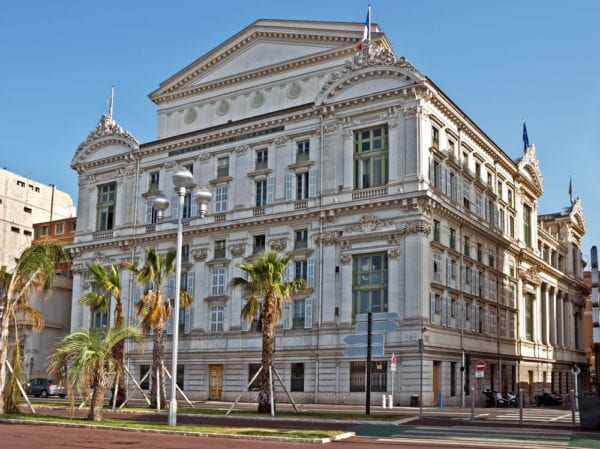Spectacle, grandeur, beauty: a night at the opera
Spectacle, grandeur, beauty: a night at the opera
Spectacle, grandeur, beauty: a night at the opera
-
Hannah
-
Hannah

By far and away my favourite occasion as a child was a visit to the Alexandria Opera House to watch a ballet performed by a visiting company like the Bolshoi or the Leningrad. It was like stepping into a fairy tale – every little girl’s dream. I still love to watch opera and ballet on stage, and over the years I have been fortunate enough to see productions at some wonderful opera houses – the Palais Garnier in Paris, the Wiener Staatsoper in Vienna, the Teatr Wielki in Warsaw, and the Royal Opera House, London, to name but a few.
My love of a night at the opera shines through in my new novel, Concerto. The heroine, Catriona Drouot, is a promising student at Le Conservatoire à Rayonnement Régional de Nice, the regional music and dance conservatory, and she dreams of being an opera singer. When a famous composer, Umberto Monteverdi, moves into the house next door to hers, she is fascinated by the man and his talent, and she buys tickets to see him perform at L’Opéra Nice Côte d’Azur – the Nice opera house.

It was so easy to weave L’Opéra Nice Côte d’Azur into the novel, for it is my ‘local’ opera house when I am at home in France, and is quite my favourite place to spend an evening. Here is a glimpse of the opera house as Catriona arrives for Umberto’s performance:
The opera house of Nice had an old grandeur that Catriona loved and she went to as many concerts and operas here as she could. The imposing nineteenth-century building was one of the most beautiful opera houses in France, a listed building with curved pediments and a glass and ornate wrought-iron awning covering the entrance, itself topped by six marble columns which framed the granulated stained-glass mullion windows.
Looking up from the entrance, one could admire the top of the sumptuous north façade with its colonnade consisting of five bays topped by two pavilions, between which statues of the four Muses by Raimondi stood: Euterpe for music, Melpomene for tragedy, Thalia for comedy and Terpsichore for dance. Everything about its neoclassical style reflected both architectural and cultural…
If the exterior of the opera house is grand and statuesque, the interior is a work of art. I write:
Arranged in a horseshoe, the auditorium was a sumptuous assault on the senses. Fitted out in typical Italian style, the vibrant red and gold of its classic baroque decor was warm and plush, if slightly over the top. The upper galleries consisted of three entire rows of gilded boxes, giving the impression of a honeycomb, separated by pillars and decorated with composite capitals and medallions representing Shakespeare, Goldoni, Corneille, Beaumarchais and Schiller.
Every time I visit, I find myself gazing about in awe, devouring every ornate detail of this auditorium. The surroundings are just beautiful – but of course that is not the entire pleasure of the evening. First, there is the sense of this being An Occasion, for everyone is so splendidly attired. Back to my heroine in the opera house:
Catriona looked around her, feeling her excitement rising. The theatre was packed. Hundreds of beautifully gowned women and tuxedoed men sat awaiting the entrance of the virtuoso. The atmosphere was saturated with wealth and opulence. Under the monumental crystal chandelier of six hundred lights the parures of the bejewelled ladies shone with the brightest lustre. The women, Catriona realized, by far outnumbered the men in the auditorium, such was the lure of the handsome and gifted maestro they had heard so much about.
Ah, the maestro! It is for he all have dressed up; it is for he they have come to this beautiful building built especially for the enjoyment of beautiful music. Is there any feeling better than the anticipation that builds towards the spectacle, the show? This is the moment for which Catriona has been waiting:
The light in the main theatre dimmed, the heavy red curtains rose and a figure stepped on to the stage amid thundering applause.
What happens next is a story for another day, but suffice it to say that Umberto lives up to his reputation as a musical virtuoso.
Writing the Opéra Nice Côte d’Azur scene was a delight for me. And, of course, it was the perfect excuse to visit the opera house and really drink in all the sights and the music. The only hard part was, inevitably, when the curtain fell and the spell was broken. But there is always a next time, and now that I have encapsulated a night at the opera in my fiction, I can transport myself there simply by opening Concerto and reading.